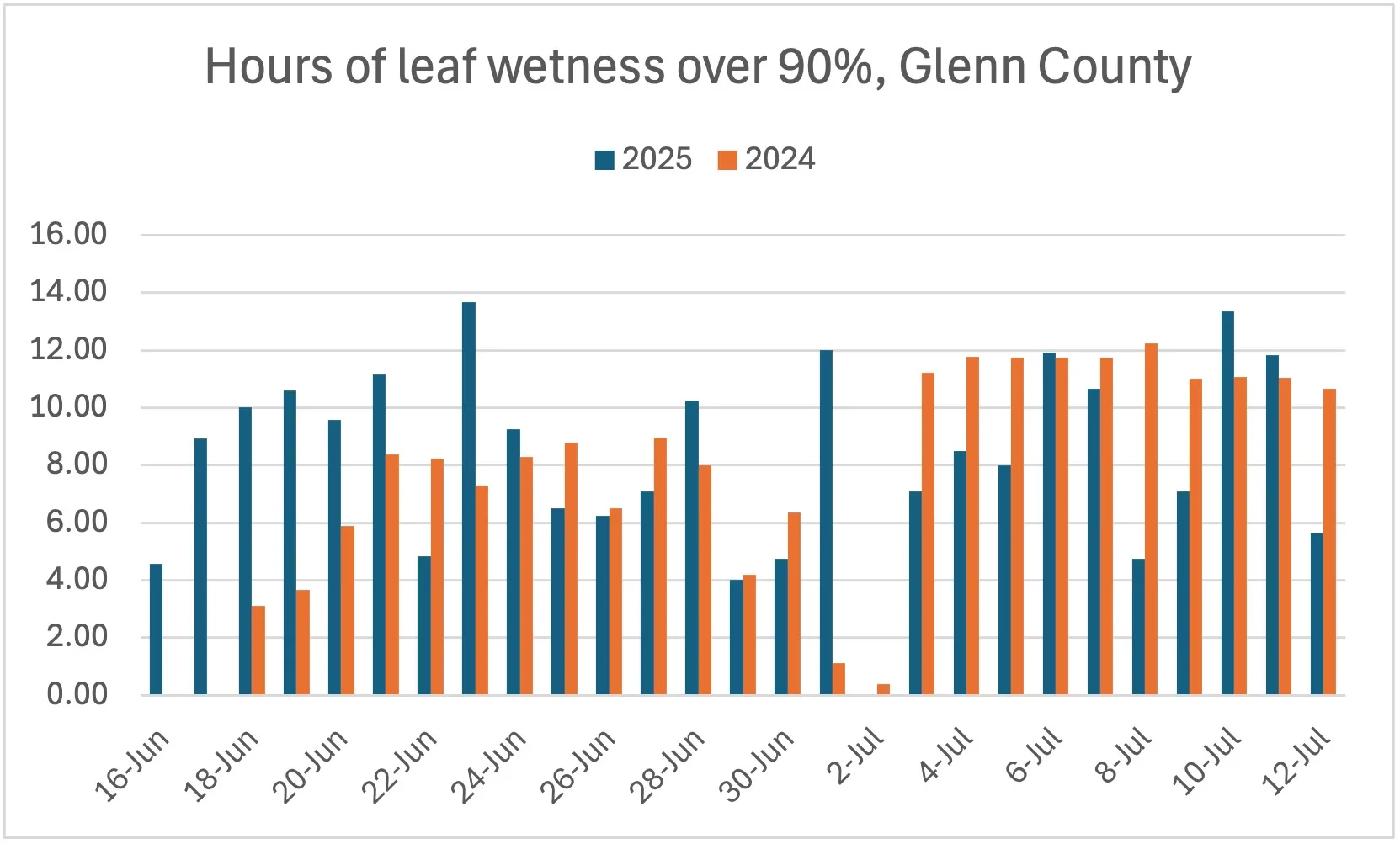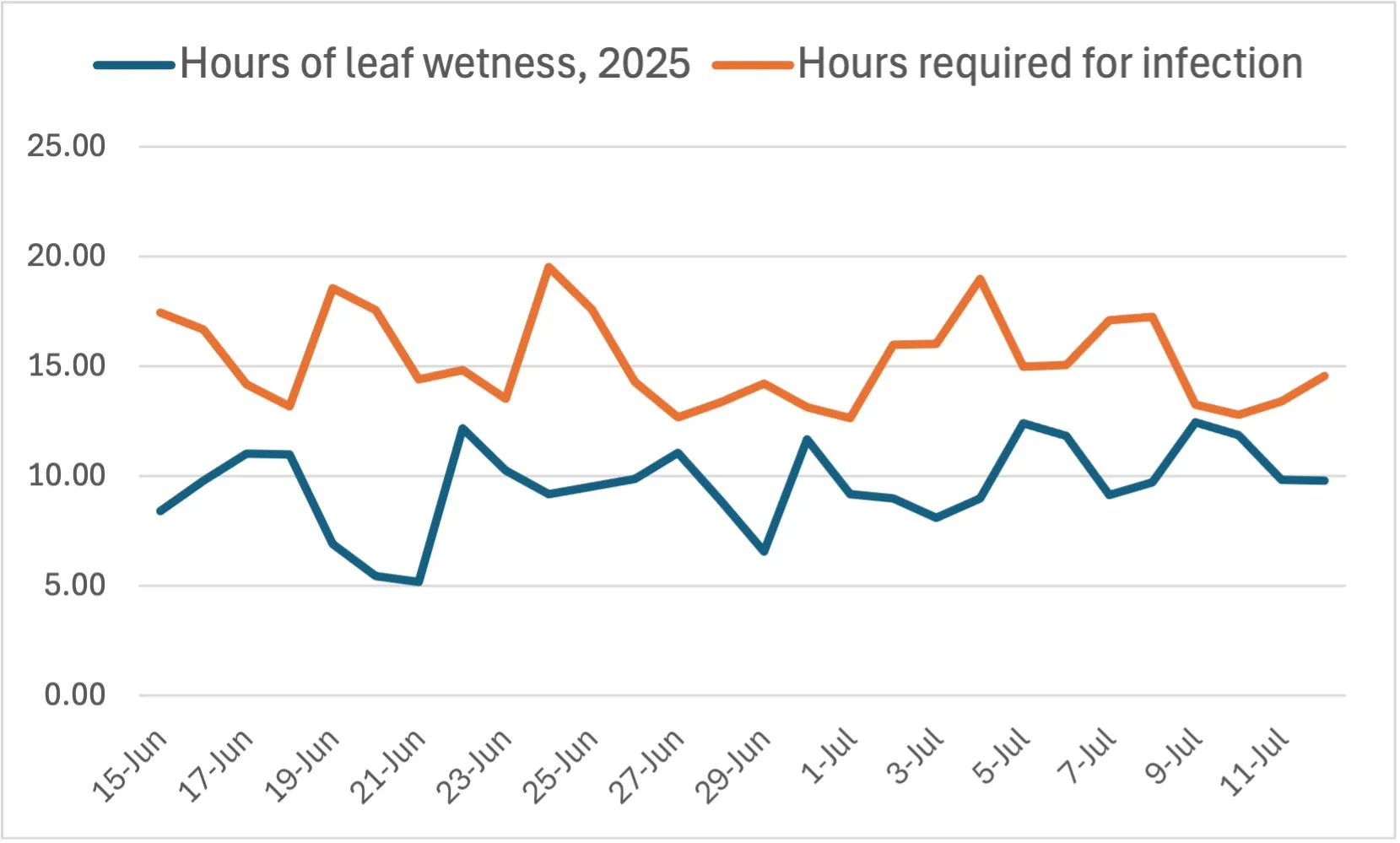As the crop starts advancing towards heading, one concern is blast. So far I have not seen any leaf blast. Blast spores need free moisture on the leaves to germinate and infect. Leaf wetness is a good measure of free moisture. Typically, leaf wetness increases during the evening and stays high until early next day.
I am monitoring leaf wetness in several areas of the valley. In Glenn county, compared to last year, leaf wetness was higher during mid to late June, and then a bit lower during July, except for a couple of peaks. Blast was not an issue last year, therefore, it is encouraging to see that wetness at the moment is a bit lower than last year.

Another way to look at this is to compare the leaf wetness we are experiencing to the theoretical hours of leaf wetness needed for infection. Using a model developed by Japanese researchers (Yoshino, 1974), we are currently below the hours needed for infection.

However, we are not in the clear yet. As panicles start emerging, moisture accumulates on the neck, where the panicle meets the boot, and this water stays there longer than the free moisture on the leaves. If blast spores land there, they can cause neck blast. The absence of leaf blast reduces the risk of seeing neck blast, but the risk is not zero.
Yoshino, R. 1974. Ecological studies on the infection in rice blast epidemics. Dew temperature and sequent change of infection rates. Ann. Phytopathol. Soc. Jpn. 39:186.

